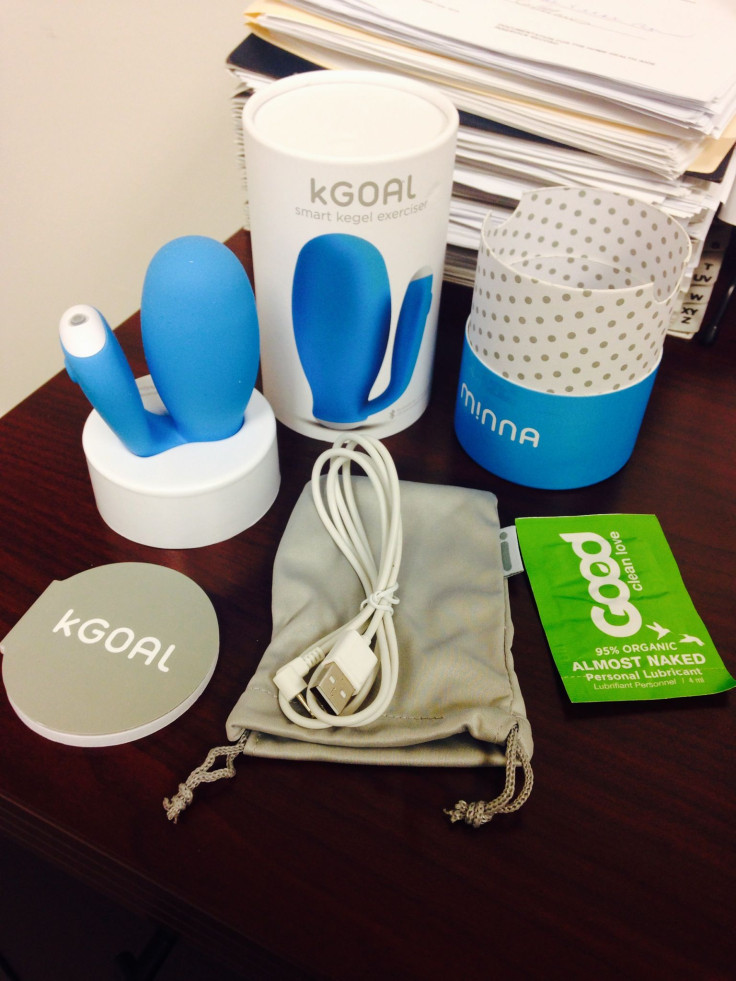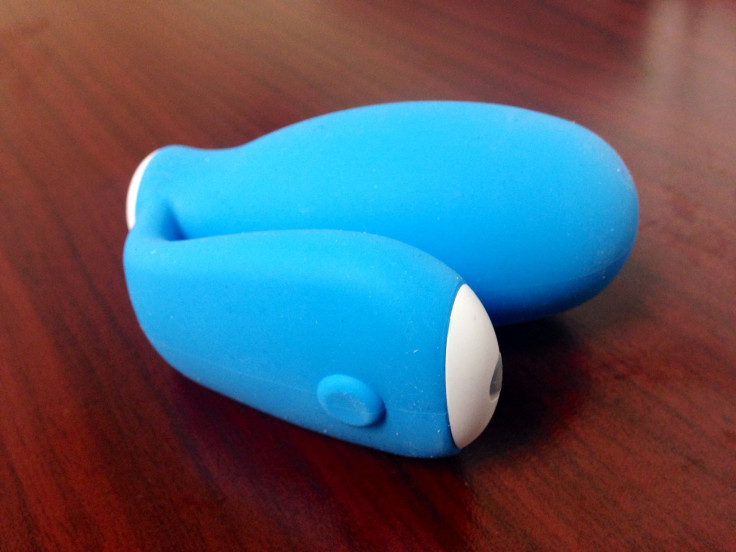Kegel Exercise Device 'kGoal' The First Of Its Kind: My Foray Into The World Of Vagina Muscle Trainers

Exercise is one of the three pillars of health and an integral part of improving quality of life. But for women, there’s a specially designed exercise known as kegels, and they have the potential to not only cure women of medical issues but also improve their sex lives. A new device, the “kGoal” smart kegel exerciser, facilitates those exercises, fully equipped with an interactive training system, wireless sensor, and vibrational feedback technology to tone your insides. The device itself has been designed to guide and improve performance, but using it is a blush-worthy experience you can perform behind bedroom doors or under the gentle guise of a trained physical therapist.
Kegel Calisthenics
In 1948, OB/GYN specialist Dr. Arnold Kegel designed exercises for women who were experiencing urinary incontinence (leakage) or muscle injury from childbirth by strengthening their pelvic floor muscles. They line the walls of the vaginal canal and wrap around your urethra, and are also the muscles that contract during climax. Kegel found that by repeatedly using resistance exercises, the body can gain or improve control of a muscle with incremental contractions. The exercises were soon named after him and practiced under a doctor’s recommendation. However, they only gained popularity for home exercises when it was advertised as a way to increase sexual gratification.
Sex aside, it still remains a public health issue for 25 million adults in the United States, and 75 to 80 percent of them are women, according to Phoenix Physical Therapy. Women experiencing incontinence should visit with their gynecologist or a certified pelvic floor physical therapist, such as Liz Miracle the consultant for Minna Life’s kGoal smart exerciser.
“We were excited we were able to gain access into this industry and deliver women a piece of exercise equipment,” the CEO of Minna Life Brian Krieger told Medical Daily. Miracle worked alongside Krieger to design an exercise tool that could be used by the average woman to strengthen and monitor muscle development. The muscles lining the inner vaginal canal assist in urinary and fecal continence, sexual performance through orgasms, and stabilize the pelvic organs, such as the bladder, bowel, and uterus in women.
“Essentially, there aren’t many good tools to show women how kegel exercises work or if they’re even doing it correctly,” Miracle, who is also the certification chair in Pelvic Floor Physical Therapy Committee for the American Physical Therapy Association, told Medical Daily. “It was important for us to develop a device with an app to track exercise repetition. Currently, devices in physical therapy are antiquated. Some of my patients say, ‘If only I could bring you home to tell me if I’m doing it right.’ And now they can.”
Childbirth, obesity, and young female runners are all causes for incontinence. As a runner myself, I found it reassuring when Miracle told me I wasn’t the only woman silently staring at the long porta potty lines in the half an hour before a race thinking, “Should I go? No, I’m fine. I can hold it. No, maybe I should go.” There is a constant daunting fear of having to shave minutes off your final time just because your bladder has poor timing. But the combination of stress and physical exertion makes it more difficult than usual to hold a seemingly small amount of urine.
In one study, researchers found 38 percent of females in high-impact sports, including running (which puts strain on the body’s muscles in a way that mimics fast-paced jumping spurts) reported urinary incontinence. Incontinence was reported by 28 percent of nulliparous women, which means they hadn’t given birth yet, so their muscles were likely stronger. In 2014, another study was conducted, this time with the goal of finding out how many women knew what they were doing when they performed kegels. Out of the 250 women surveyed, 95 percent of them were confident they knew how to correctly squeeze their pelvic floor muscles. But when tested, only 24 percent of the group actually did it right.
“It’s just as important to hold as it is to release, and engaging those lower muscles is a huge problem among young runners. But they don’t even recognize it as incontinence,” said Miracle, who tested prototypes on her patients with success. “We want to help patients by applying the science into health wellness, by benefitting from the vibrational biofeedback.”
When Minna Life sent the product to my office the day of its release, I was immediately reluctant yet plagued with an imploring curiosity. I had never even tried a simple do-it-yourself kegel before, let alone used a device to monitor my strength and exercise progress. As Miracle and Krieger told me, it was the first device of its kind to gauge and challenge the pelvic floor muscles while providing live streaming feedback stored into a smartphone app.

A Kegel First Timer’s kGoal Experience
I decided to put my 12-year-old boy maturity behind me and opened up the sleek cylinder package. The light blue silicon “splash-resistant” device fit easily in the palm of my hand. I examined its small oblong inflatable pillow attached to a smaller operative exterior handle, which is where the start button, battery, and Bluetooth antenna reside. To assist in the (dare I say it) insertion process, the device was sent along with a packet of 95 percent organic lubricant.
The part used to measure muscle strength contained a 360-degree sensor technology that vibrated when the muscles squeezed around it. The vibration increased the tighter it was squeezed, telling me how strong or weak I was. Minna Life’s two earlier devices are labeled as sexual health products, more commonly known as vibrators. It was difficult, at first, for me to separate the idea of a vibrating sex toy from an exercise device. The kGoal was somewhat of a hybrid, which could be used to both improve sexual health and also meet the needs of those suffering from incontinence or muscle damage.
I was given early access to kGoal’s personal trainer app for my iPhone and was relieved to find there was a low likelihood of peeing my shorts in this year’s marathon. When I did my research, I found being a runner could actually help improve my ability to contract the surrounding and internal pelvic muscles. My lower abdominal muscles were developed enough to make the kGoal register muscle contractions even when I laughed. Yes, I laughed. I couldn’t help laughing quietly to myself at first — between how cold it was and the realization that I was going to have to write about my experience afterward.
But I eventually resolved to seriousness as I counted my reps. It was just like performing a bicep curl at the gym, except I was lying down in the privacy of a bedroom, no membership necessary, and counted 12 squeezes for three sets. I read the experience of another woman who said she felt severe pain, which made me reluctant to even give it a try in the first place.
As it turns out, according to Kegel, pain is a sign that the pelvic floor muscles are already spasmed or shortened, and kegels will only worsen it — at this point, you should consult medical advice. Fortunately, I didn’t have this problem. The removal process, however, was a different experience altogether and painful in a way I didn’t expect. It immediately reminded me the device wasn’t for arousal and reinforced exercise’s “no pain, no gain” mantra.



























